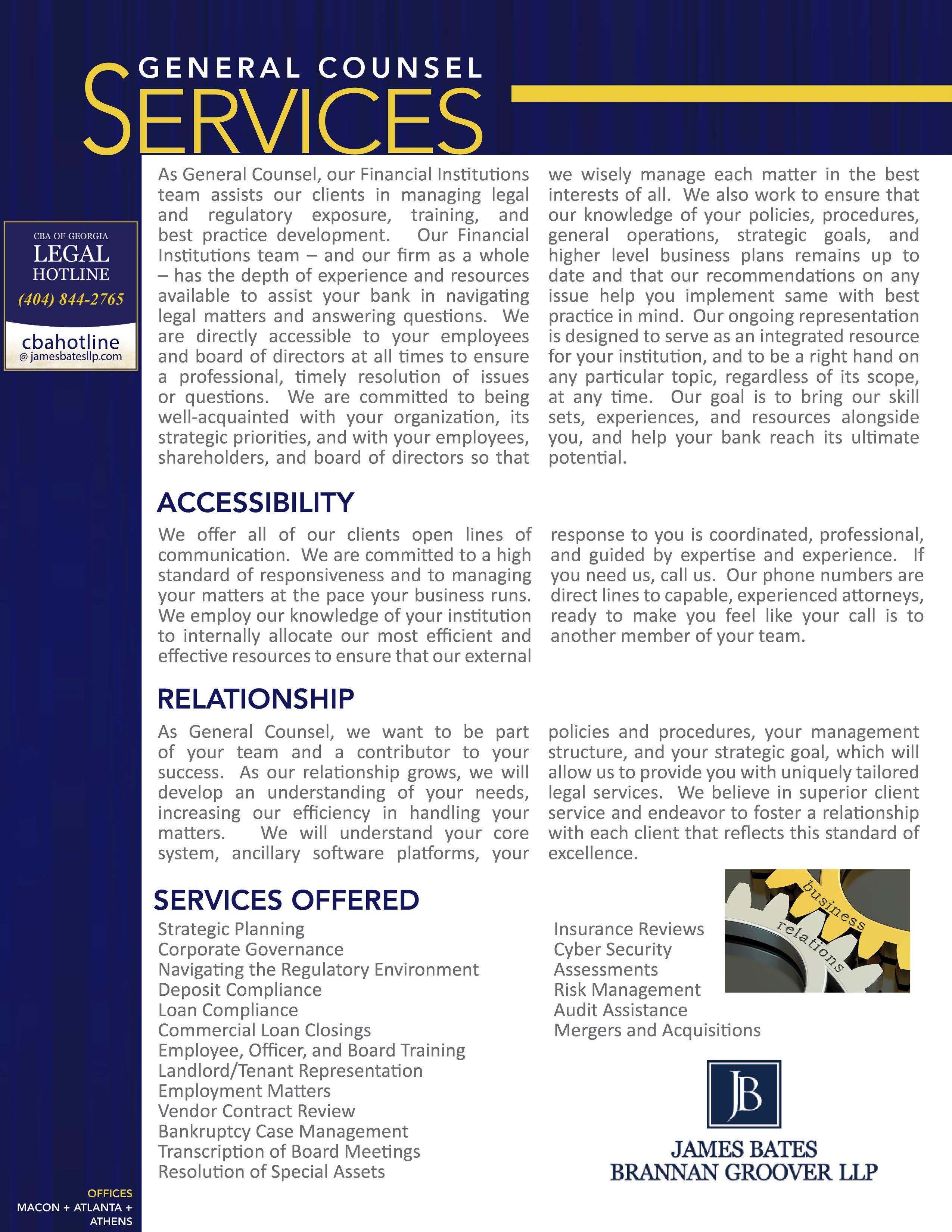
3 minute read
Educating Future Talent on Community Bank Career Opportunities Is Up to Us
Debra Weil
Executive Vice President Community Banking Co. of Fitzgerald 2021-2022 CBA Chairwoman
Advertisement
As a proud graduate of Georgia Southern, I am also a proud example of a “Home Grown” community banker. While many of us long time community bankers have served in multiple capacities during our career, when most people think about their local community bank, they think of their local branch along with the tellers and manager that operate the branch. Clearly, front line community bankers are critical to the success of any financial institution. However, what is not known by most is the vast array of behind-the scenes jobs that make a financial institution function daily. Below, I have outlined a few critical functions that are vital to the success of any community bank:
Local Branch Personnel: As indicated, these are critically important position for the bank as they serve as the front line, customer facing representatives of the bank. Key branch positions include:
• Bank Tellers: They are responsible for processing bank’s day-to-day transactions. They are the face of the bank that customers interact directly with the customer. Tellers need to know the bank’s products and services, as well as how to operate the transaction processing system. Teller positions exist for both full-time staff and for part-time.
• Customer Services Representatives are responsible for opening accounts, assisting customers with technical support, general account maintenance, and assisting with the daily operations of the branch. They too must know the bank’s products and services and be prepared to introduce to the customer if the appropriate need arises.
• Branch Managers are responsible for the day-to-day operational side of the branch. In addition to overseeing the Customer Service Representatives and Tellers, the Branch Manager is responsible for attaining branch goals, visiting local businesses, maintaining the lines of communication between their branch, the back office, and other branches of the bank. Lenders are the direct contact between the bank and those seeking to borrow money for a home, car, or small business. Lenders meet with people and/or businesses to help determine their credit needs and guide them through the complex loan process. They work in conjunction with Loan Operation personnel who handle the detailed underwriting on loan applications and prepares the required documentation for approval loans. They make sure the loan documents are properly completed, that the application is complete, and all documentation has been collected from the customer.
The Marketing Department at a bank is very similar to the marketing department at any other company. Their job is to create campaigns that will help to sell the bank’s services and products and promote the bank’s image in the community. The employees in the Marketing Department do everything from representing the bank at events, to buying ad space, to maintaining the bank’s social media presence, to compiling data into spreadsheets.
The Human Resources Department has a large responsibility at every bank. They oversee the bank’s greatest resource: its employees The HR Department oversees all employment items, maintains compliance with labor laws, manages compensation and benefits, record keeping, addressing safety and health concerns, establishing employee relations and so much more.
As bankers, we know these and other roles exist throughout our respective institutions; however, I believe it is a good reminder when pursing the next generation of community banker to understand the perception challenge we face and to make sure to educate prospective employees as to the multiple opportunities within our banks. In my opinion, this well help prospective employees- especially those that may be new to the labor market, see future opportunities for growth in the community banking industry.










